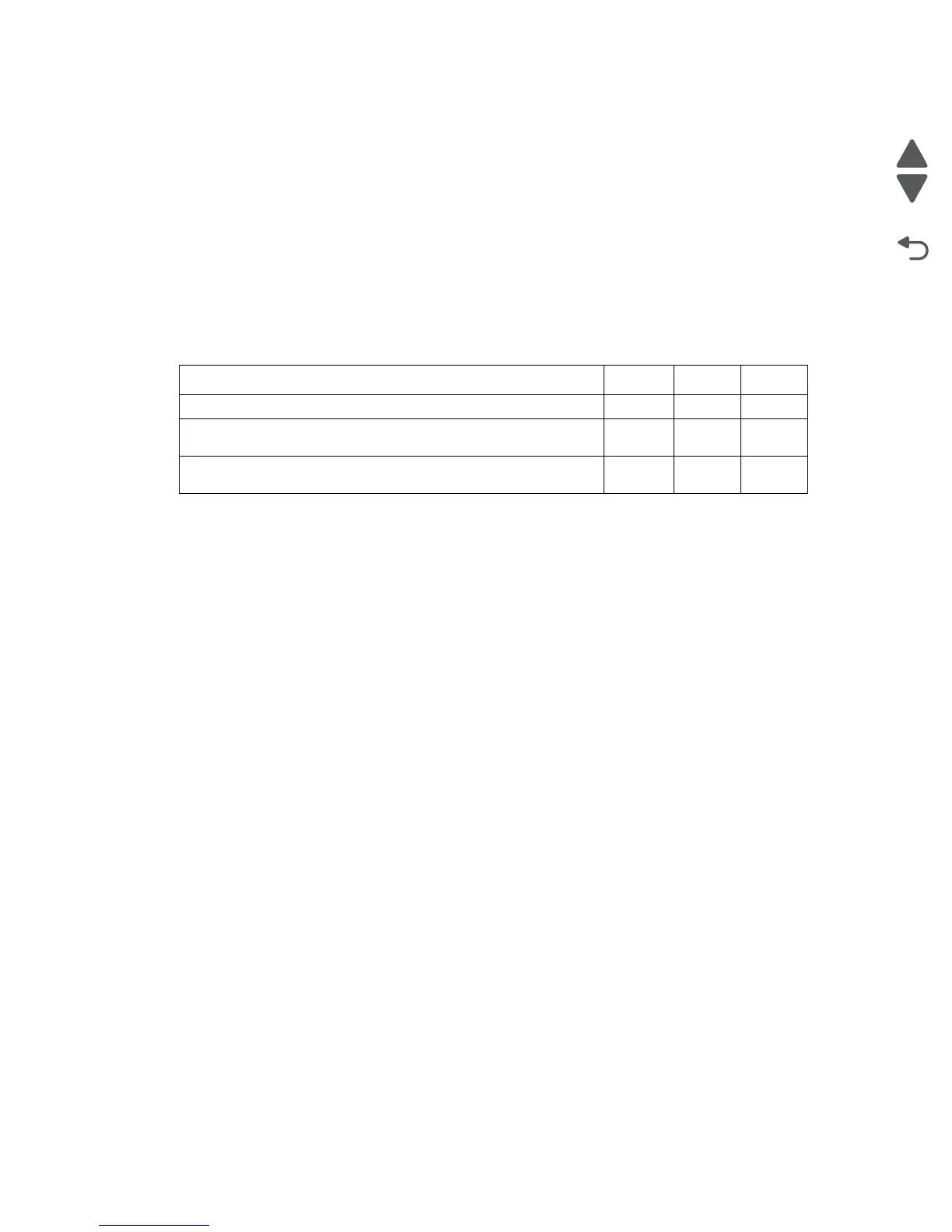Diagnostic aids 3-85
5058-030
Capacity of compiler unit assembly
Media volume that can be stacked on the compiler unit assembly is limited as shown in the table below.
The number of sheets depends on whether media is stapled or not, as well as on media size.
If the number of sheets of one set to be stapled exceeds the limit, the exceeding sheets are not stacked on the
compiler unit assembly, and are forcibly ejected to the stacker media bin without being stapled.
This forcible ejection is performed to prevent damage to the staple assembly.
When feeding large media in the non-staple mode, there may be a misalignment depending on media
characteristics. For this reason, the default media capacity is set to a smaller value.
Compiler unit assembly operation with multiple media sizes
When two or more media sizes are used and their widths are the same (example: A4L and A3S), all the sheets
are compiled and stapled as a set on the compiler unit assembly, and then ejected to the stacker media bin.
When two or more media sizes with different media width are used, stapling media on the compiler unit
assembly is stopped when a different size is detected. Such different-sized sheets of media are forcibly ejected
to the stacker media bin.
Tamping
When media is fed from the punch to the compiler unit assembly, tamping is performed to align the media in the
media width direction on the compiler unit assembly.
Tamping is an operation to align media to the specified position on the compiler unit assembly. The front tamper
or rear tamper is moved to the end of the media by its motor.
Tamping is executed each time when a sheet of media reaches the compiler unit assembly. Additional tamping
is executed after the last sheet is tamped.
There are three types of tamping:
• Front tamping—Tamping by the rear tamper with the front tamper fixed at the home position.
• Rear tamping—Tamping by the front tamper with the rear tamper fixed at the home position.
• Center tamping—Tamping by the front and rear tampers to align media to the center.
Front tamping
Front tamping is used in the following cases.
• In the non-staple mode
• When executing front stapling (corner)
Compiler unit assembly media capacity
Condition Min. Default Max.
Staple mode 2 50 75
For small media (less than 216 mm in the feed direction) in
non-staple mode
10 50 100
For large media (216 mm or more in the feed direction) in
non-staple mode
10 25 100

